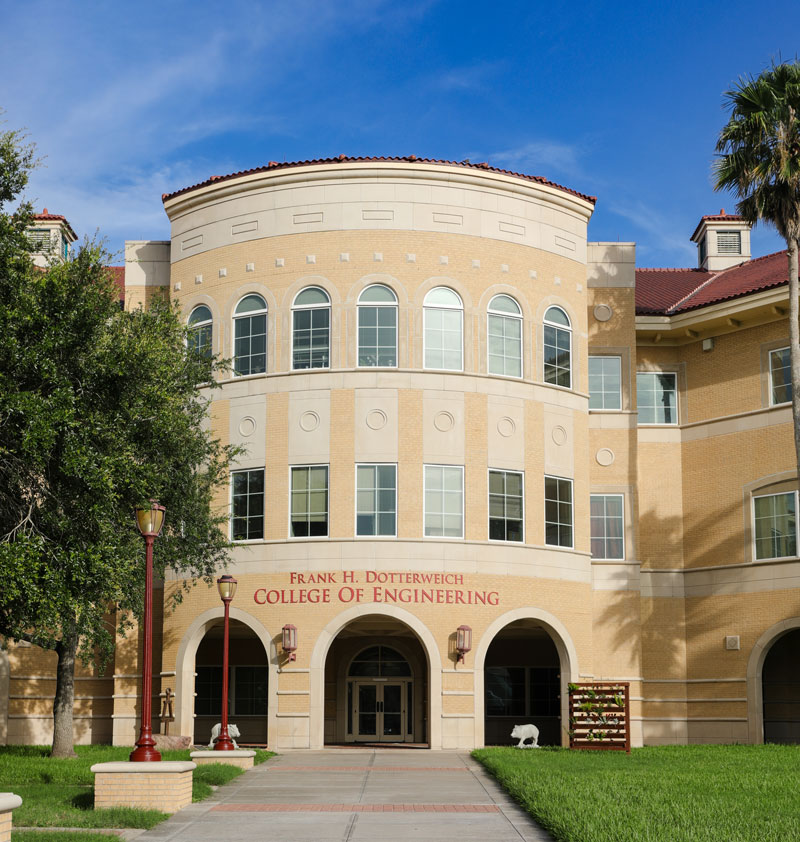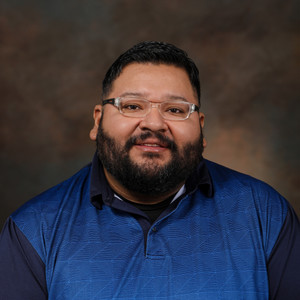KINGSVILLE (Nov. 19, 2024) — Stanford and Elsevier recently released its 2024 Top 2% Scientists List where Texas A&M University-Kingsville’s own Frank H. Dotterweich Endowed Chair and Professor of Chemical Engineering Dr. Patrick L. Mills and Associate Dean for Undergraduate Affairs and Professor of Electrical Engineering and Computer Science Dr. Afzel Noore were both recognized in the list for their worldwide influence in their respective fields.
The list is a ranking that highlights researchers whose works have significant impacts in their respective fields and on other scientists.
The 2024 top 2% scientist rankings released this month is based on citations from 2022 to the end of 2023 and uses metrics like h-index, co-authorship adjustments, and a composite citation score which reflects a scientist’s influence rather than just their publication count.
Noore’s areas of research are in artificial Intelligence, machine learning, pattern recognition, and image processing. His research in those areas have allowed him to receive funding from the National Science Foundation, NASA, Defense Advanced Research Projects Agency (DARPA), the Department of Defense (DoD), Army Research Laboratory, and the FBI.
“When I learned that I was recognized among the top 2% research scientists in the world in the field of artificial intelligence and image processing, I was ecstatic,” Noore said. “This research recognition accentuates the dedication and perseverance of my PhD students who never gave up on any impediment or setback on their research journey.”
For the past nearly 19 years at Texas A&M-Kingsville, Dr. Mills used his extensive industrial research and development experiences to serve as principal investigator (PI), co-PI or senior investigator on programs advancing workforce development as well as creation of emerging technologies.
Mills is also a career-long member of the American Institute of Chemical Engineers (AIChE), Sigma Xi, and the Society for Industrial and Applied Mathematics. In addition to active participation and service in these societies over a 40+ year period, he served as an officer and Chair of the national AIChE Catalysis and Reaction Engineering Division and he was instrumental with its formation.
“Staying in touch with the latest developments in my research area by reading recent relevant publications, presenting research at high-quality conferences, setting annual goals on the number and type of research articles that will be written and submitted, keeping a notebook with research ideas, and staying in touch with professional colleagues on what they are working on, amongst other actions, have been an integral part of my efforts over the years to maintain and expand research momentum,” Mills said. “Striving for top quality in oral and written media and working on innovative approaches over a sustained time period are also a key part of gaining lasting recognition for your contributions.”
About Dr. Patrick L Mills
Prior to coming to TAMUK, Mills was a Senior Research Associate in the DuPont Company's Central Research and Development Department in Wilmington, Delaware where he leveraged his expertise in the science and technology of multiphase reaction engineering, transport processes, experimental systems engineering, mathematical modeling, and computational science to create notable business impact in many technology areas for various DuPont businesses, including Dacron, Nylon, Lycra, White Pigments, Fluoroproducts, and Nonwovens. He was awarded an Engineering Excellence Award from DuPont for development of the MARS reactor system, which was an automated catalyst testing productivity device. The system hardware platform and data analysis engine became a company standard that was duplicated numerous times and subsequently used to produce data that was an integral part of many novel process patents.
Prior to joining DuPont R&D, Mills worked for nearly ten years at the Monsanto Corporate Research Center in St. Louis and the GE Corporate R&D Center in Schenectady, New York.
While at TAMUK, Mills has worked on research programs funded by government agencies and private companies for advancing workforce development as well as creation of emerging technologies. Some examples of the latter include (1) invention of novel catalysts and processes for conversion of bio-based feedstocks, such as Rio-Red grapefruit process waste and Cassava peel, to clean, sustainable fuels and chemicals; (2) design and demonstration of integrated PC-based microchemical reactors for safe manufacturing of hazardous chemicals; (3) invention of innovative sulfuric acid porous catalyst shapes that reduce energy costs, extend operating times, boost acid production, and reduce overall plant sulphur dioxide emissions; and (4) development of patented experimental methods with sub-millisecond time resolution for quantification of fast pyrolysis reaction products from biomass feedstocks using synchrotron-based detection. Research results from these and other works have resulted in peer-reviewed publications, technology reviews, book chapters, patents, professional society conference presentations, and invited lectures. His various MS and PhD are highly sought after in industry due to their unique research experiences and have had very successful careers.
About Dr. Afzel Noore
Dr. Noore’s areas of research are in artificial Intelligence, machine learning, pattern recognition, and image processing. Dr. Noore has received funding from NSF, NASA, DARPA, DoD Army Research Laboratory, and the FBI.
One of the projects was funded by the Department of Defense. The DoD faced challenges in meaningfully using fingerprint, iris, and face images that were captured in the battlefield environment in Iraq and Afghanistan. The biometric images were non-ideal and unreliable because of they were of low-quality and captured under non-controlled conditions. Using AI and machine learning techniques to process these unusable biometric images, Dr. Noore developed algorithms and demonstrated to reliably identify humans with great accuracy.
Another challenging project involved the FBI wanting to identify persons who deliberately changed their facial features to avoid being detected. They also wanted to identify fugitives who tried to alter the iris pattern by wearing a contact lens. The FBI knew that Dr. Noore performed biometrics research in this area and contacted him at Kingsville. The FBI awarded him a grant to solve this problem. Working collaboratively with a postdoc, Dr. Noore developed a machine learning prototype tool for the FBI and they were very satisfied with the performance. The tool identifies suspected criminals or terrorists with high accuracy even if they use emerging technologies to change their biometrics for impersonating others or concealing their identities.
Checks a person’s biometrics against a watch list of known or suspected terrorists, criminals, and immigration violators
Dr. Noore and his PhD students were the first to demonstrate the low face recognition accuracy of commercial systems when a person performed plastic surgery for cosmetic reasons. They proposed new machine learning algorithms to improve the accuracy of commercial face recognition algorithms. Also, the research on using generative AI to develop synthetic iris images received a best paper award. Two of his PhD students have been recognized as Fellows of the Institute of Electrical and Electronics Engineers (IEEE), the world’s largest technical professional organization, and Fellows of the International Association of Pattern Recognition (IAPR).
Dr. Noore’s research has been published in reputable journals and conferences. He received 10 best paper awards in international conferences from professionals and experts for identifying innovative research problems and proposing novel solutions.

